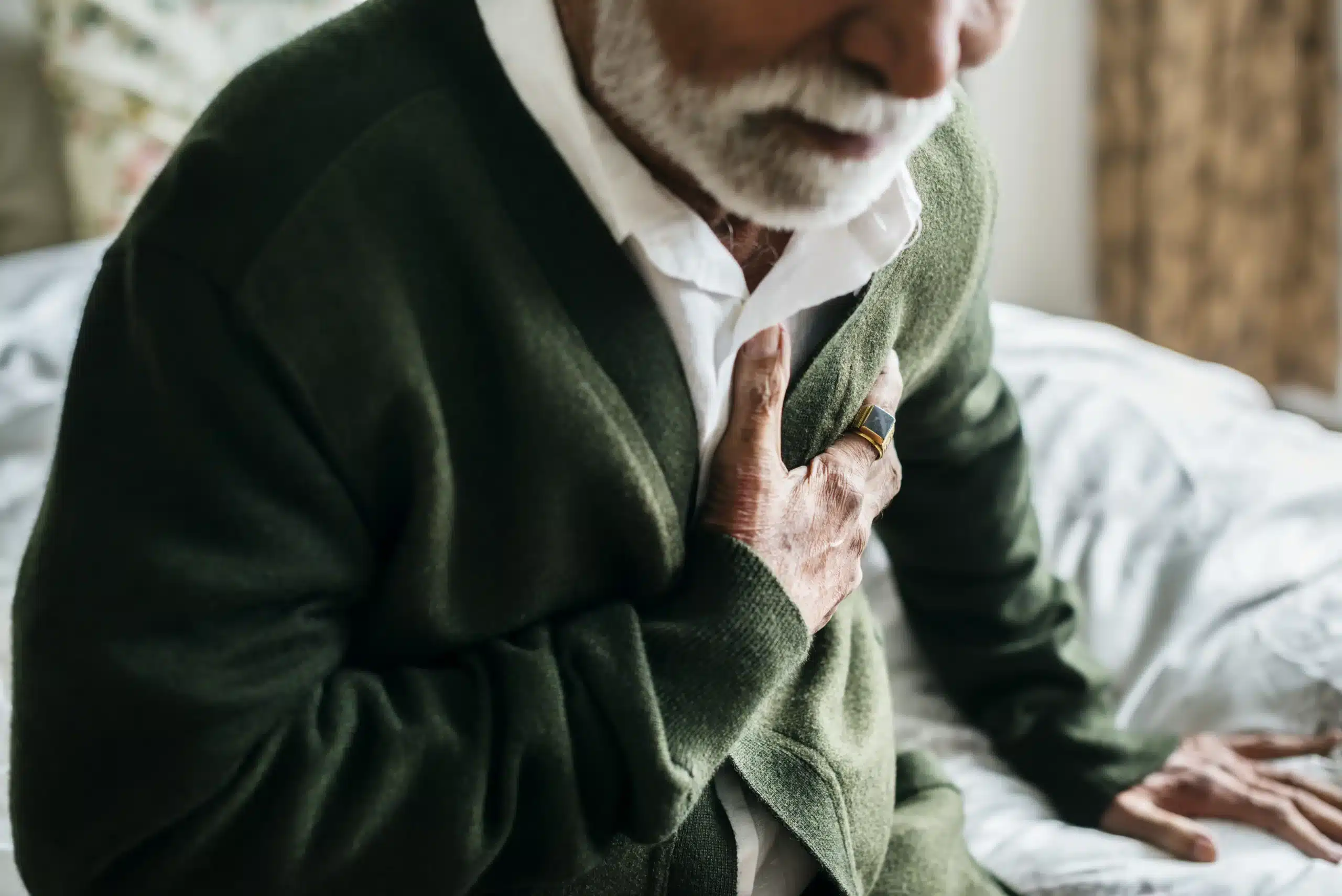In an emergency, seconds can matter. CPR can be the difference between life and death, and knowing how to perform it effectively is a powerful skill. If you’ve been searching for “CPR certification near me,” you’re in the right place. This comprehensive guide covers everything from the basics of CPR to choosing the right course and understanding certification requirements. We’ll explore different CPR courses, discuss the benefits of becoming certified, and address common concerns like cost and time commitment. We’ll also introduce you to Safety Training Seminars, a leading provider of CPR training in Antioch, Brentwood, and Pittsburg, known for its affordable prices and convenient class schedules.
Key Takeaways
- CPR certification equips you for real-world emergencies: Find a course that matches your specific needs, whether you’re a healthcare provider, a parent, or simply want to be prepared. Learning CPR builds confidence and provides the skills to respond effectively in various situations.
- Choosing the right CPR course is essential: Consider factors like the instructor’s qualifications, hands-on practice opportunities, and course content. AHA-aligned programs offer up-to-date techniques and ensure you receive a recognized certification. Explore discounts and low price guarantees to make training more accessible.
- CPR certification offers valuable benefits: From personal preparedness to career advancement and community impact, learning CPR is a worthwhile investment. It empowers you to make a difference and potentially save a life.
What is CPR Certification?
CPR certification equips you with the skills to respond effectively during medical emergencies. It’s a formal credential, verifying your training in cardiopulmonary resuscitation (CPR). While you’re not legally required to have certification to perform CPR, completing a CPR course ensures you’re properly trained and confident in your abilities. This training covers essential life-saving practices like chest compressions, rescue breathing, and how to use an AED. Learning these techniques in a structured environment not only prepares you for emergencies but also empowers you to make a real difference. For those in Antioch, Brentwood, and Pittsburg, Safety Training Seminars offers a range of courses to gain this vital skillset.
CPR Certification Courses
CPR certification courses equip you with the skills to respond effectively during medical emergencies. Different courses cater to various age groups and situations, ensuring you’re prepared for anything. At Safety Training Seminars, we offer a range of American Heart Association courses designed to meet your specific needs. Our convenient Antioch location serves Antioch, Brentwood, and Pittsburg.
Adult CPR
Adult CPR courses focus on techniques tailored to adults. You’ll learn how to assess an unconscious adult, perform chest compressions, and provide rescue breaths. The curriculum emphasizes maintaining blood circulation and oxygen flow until professional medical help arrives. These courses often cover choking relief maneuvers for adults, too. Our BLS course provides comprehensive training in these essential adult CPR techniques.
Child and Infant CPR
Child and infant CPR courses address the unique needs of younger individuals. You’ll learn modified CPR techniques for infants and children, accounting for their smaller size and delicate physiology. The courses cover rescue breathing, chest compressions, and recognizing signs of choking. PALS certification delves deeper into pediatric advanced life support, building upon foundational child and infant CPR skills.
AED Training
AED (Automated External Defibrillator) training is often integrated into CPR certification courses. You’ll learn to operate an AED safely and effectively, a skill that can significantly increase the chances of survival during cardiac arrest. The training covers assessing the situation, applying AED pads, and following the device’s prompts. Our ACLS course includes comprehensive AED training within its advanced cardiac life support curriculum.
Combination Courses
For comprehensive training, combination courses offer CPR certification for adults, children, and infants, along with AED training and sometimes First Aid certification. These courses provide a well-rounded skill set, preparing you to handle various emergencies. Check out our discount group class options for cost-effective combination training. We also offer a low price guarantee, ensuring you receive excellent value for your investment in life-saving skills.
Find CPR Certification Providers Near You
Locating a CPR class can feel overwhelming, but several reputable organizations offer training. Understanding your options will help you choose the best fit.
American Heart Association
The American Heart Association (AHA) is a leader in CPR training, offering various courses like Basic Life Support (BLS), Advanced Cardiovascular Life Support (ACLS), and Pediatric Advanced Life Support (PALS). These courses give people the skills to respond effectively in medical emergencies. The AHA offers resources to find certified training centers.
Safety Training Seminars
Safety Training Seminars, a woman-owned AHA Training Center, delivers high-quality AHA courses such as BLS, ACLS, PALS, CPR, and First Aid. Known for competitive pricing and comprehensive training, Safety Training Seminars serves individuals and organizations throughout the San Francisco Bay Area, including Antioch, Brentwood, and Pittsburg. Explore their website for discounts, group classes, and a low price guarantee.
American Red Cross
The American Red Cross is another trusted resource for CPR and First Aid certification. They offer a range of programs designed for everyone from healthcare professionals to the general public. Use their website to locate classes near you.
Local Training Centers
Beyond these national organizations, consider local training centers for accredited CPR courses. Many tailor training to their community’s specific needs, offering relevant, practical instruction. A quick online search for “CPR training near me” will generate local options. Look for reviews and testimonials to understand the quality of instruction.
Choose the Right CPR Course
Finding the right CPR course involves a little more than a quick Google search. It’s about understanding your needs and finding a class that fits your learning style and schedule. Here’s what to consider:
Course Content and Curriculum
CPR classes equip you with essential lifesaving skills. They cover core techniques like chest compressions, rescue breathing, and how to use an AED. Beyond the basics, a good course will also teach you how to assess an emergency scene and respond safely. Look for programs that align with American Heart Association guidelines to ensure you’re learning up-to-date techniques. At Safety Training Seminars, our curriculum covers all of this and more, preparing you to handle real-world emergencies.
Instructor Qualifications
Experienced, certified instructors are key to a valuable learning experience. They can provide personalized feedback, answer your questions thoroughly, and create a comfortable learning environment. Check the credentials of the instructors before signing up. Our instructors at Safety Training Seminars are highly qualified and committed to providing excellent instruction. They bring real-world experience and a passion for teaching to every class.
Class Size and Hands-on Practice
Hands-on practice is crucial for mastering CPR skills. Smaller class sizes allow for more individual attention from the instructor and ample opportunity to practice on mannequins. This personalized feedback helps you refine your technique and build confidence. We keep our class sizes small at Safety Training Seminars to maximize your learning and practice time. Check out our discount group class options for an even more affordable way to learn with friends or colleagues.
Certification Validity Period
CPR certifications typically remain valid for two years. Before registering, confirm which type of certification (American Heart Association or Red Cross) your workplace or school prefers, as requirements can vary. Our American Heart Association courses provide you with an official certification card, valid for two years, ensuring you meet widespread requirements. We also offer a low price guarantee, so you can be confident you’re getting the best value for your training.
CPR Certification Costs
Getting CPR certified is an investment in your skills and the safety of those around you. Understanding associated costs will help you budget accordingly. This section breaks down the typical price range for CPR certification, explores potential discounts, and highlights Safety Training Seminars’ commitment to affordability.
Average Price Range
CPR certification costs in the San Francisco Bay Area, including Antioch, Brentwood, and Pittsburg, vary based on several factors. The type of course you choose (CPR, BLS, ACLS, PALS, etc.) and the training provider influence the final price. Generally, expect to pay between $50 and $150 for basic CPR certification. More advanced courses like ACLS (Advanced Cardiovascular Life Support) or PALS (Pediatric Advanced Life Support) typically cost more due to their specialized content.
Potential Discounts and Promotions
Many training centers, including Safety Training Seminars, offer discounts and promotions to make these essential life-saving courses more accessible. Group discounts are common for businesses, organizations, or groups of friends signing up together. Check for promotional offers, which can sometimes lower the overall cost. Contacting a provider directly to inquire about current deals is always a smart move.
Safety Training Seminars’ Low Price Guarantee
Safety Training Seminars is committed to providing high-quality training at competitive prices. We’re proud to offer a low price guarantee in Contra Costa County, ensuring excellent value for your training. We believe cost shouldn’t be a barrier to learning these vital skills. Compare our prices – you’ll see the difference!
What to Expect During CPR Training
CPR training blends classroom learning with hands-on practice, giving you the skills and confidence to respond effectively in emergencies. Here’s a glimpse of what your training will involve:
Classroom Instruction
Your CPR class will cover essential topics related to emergency medical care. You’ll learn how to recognize the signs of a cardiac arrest, activate the emergency response system, and understand the importance of early CPR and defibrillation. The course will also cover rescue techniques like chest compressions and rescue breathing. For a deeper dive into CPR class topics, check out this resource from CPR Tacoma.
Hands-on Practice with Real-Time Feedback
CPR classes are far from passive lectures. You’ll actively practice the techniques you learn, using mannequins to simulate real-life scenarios. This hands-on training helps build muscle memory and confidence. Many courses, such as those at Safety Training Seminars, incorporate real-time feedback. Instructors observe your technique and offer personalized guidance. This approach, backed by research from ScienceDirect, improves both the quality of CPR performance and how well you retain those skills. The blend of learning and practice ensures you’ll feel prepared to act quickly and effectively in a real emergency, as explained by this CPR AED Course article.
Assessment and Certification Process
Most CPR classes include a certification process to assess your skills and knowledge. This typically involves a practical demonstration of your CPR technique on a mannequin and answering questions about the procedures. After successfully completing the assessment, you’ll receive an official certification card, usually valid for two years. Some courses also include basic first aid or Basic Life Saving (BLS) certification, as detailed by AED CPR. Experienced instructors play a key role throughout this process, providing answers, personalized feedback, and the support you need to use your skills confidently. Quest Safety Training discusses the value of experienced instructors in CPR training.
Time Commitment and Certification Duration
CPR certification is a valuable investment, so it’s wise to understand the time commitment involved. Between work, family, and other obligations, you’re busy. Let’s break down what you can expect, so you can plan accordingly.
Course Length Options
CPR course length depends on the material covered. A basic CPR course typically lasts between two and four hours. More comprehensive courses that include First Aid and AED training may take longer. Safety Training Seminars offers a variety of courses to fit your needs and schedule, including on-site and in-office training for groups. This can be a great option for workplaces or community organizations. Check out our discount group class options for more information.
Certification Validity
Once you successfully complete your CPR training and pass the skills assessment, you’ll receive an official certification card. AHA certifications, like the ones offered at Safety Training Seminars, are valid for two years. This timeframe aligns with industry best practices and ensures your skills are up-to-date.
Renewal Requirements and Continuing Education
When your certification nears its expiration date, you’ll need to take a renewal course to stay current. This refresher course covers the latest guidelines and techniques, reinforcing your skills and knowledge. Regular practice and continuing education are essential for providing high-quality CPR. Consider signing up for a renewal course a few weeks before your certification expires to avoid any lapse in your credentials.
Benefits of CPR Certification
Getting CPR certified offers several advantages, from personal growth to career opportunities and making a difference in your community. Let’s explore some key benefits:
Personal Preparedness and Confidence
CPR certification equips you with the skills to respond effectively in emergencies. You’ll learn to assess situations quickly and react promptly, following the Chain of Survival. This knowledge builds confidence, knowing you can make a difference if someone experiences cardiac arrest. Many courses also cover rescue breathing, chest compressions, and other first aid techniques, making you even more prepared for various emergencies. At Safety Training Seminars, we emphasize these essential skills in our courses.
Professional Advancement Opportunities
In many healthcare and related professions, CPR certification is a job requirement. This credential can open doors to new opportunities or enhance your current role. Employers value candidates with up-to-date certifications, as it shows a commitment to patient care and safety. When selecting a course, research the instructor qualifications and the training provider’s credibility to ensure your certification meets professional standards. Advanced certifications, like ACLS, are essential for medical professionals such as doctors and paramedics, providing specialized training in advanced life support. Safety Training Seminars offers a range of courses to meet diverse career needs.
Community Safety Impact
Learning CPR empowers you to contribute to a safer community. Cardiac arrests are a significant public health concern. Bystander CPR can dramatically increase survival rates, sometimes doubling or even tripling the chances of someone surviving. Your CPR skills can truly be the difference between life and death for someone in your community. CPR training creates a network of trained responders ready to act when needed. Consider getting certified with Safety Training Seminars and become a vital link in the chain of survival in your community.
Common CPR Certification Concerns
It’s normal to have a few questions before signing up for a CPR class. Let’s address some common concerns:
Prerequisites and Physical Requirements
You don’t need any prior medical knowledge or special certifications to learn CPR. The training is designed for people of all backgrounds, from healthcare professionals to concerned parents. While there aren’t strict physical requirements, you’ll participate in hands-on practice, including chest compressions and rescue breaths. If you have any physical limitations, chat with your chosen CPR instructor beforehand. They can offer modifications or guidance to ensure you can fully participate and gain confidence in your skills. It’s worth noting that you don’t need mandatory certification to perform CPR in an emergency, but a proper CPR course ensures you’re prepared.
Online vs. In-Person Training Effectiveness
Deciding between online and in-person CPR training often comes down to personal preference and learning style. Studies show that both methods can be equally effective in teaching the core skills. Online courses offer flexibility, allowing you to learn at your own pace and on your own schedule. In-person classes provide immediate feedback from an instructor and the opportunity to practice with other students. However, keep in mind that while some employers accept online CPR certifications, many, especially in regulated healthcare fields, prefer in-person training. Check with your employer or licensing board to confirm their requirements.
Overcoming Fear of Performing CPR
Many people feel hesitant about performing CPR due to fears of doing it wrong, causing further injury, or the close contact involved with rescue breaths. These are valid concerns, but remember that any attempt to help is better than none. Learning CPR equips you with the knowledge and skills to make a real difference in a life-or-death situation. Even if you’re not perfectly confident, your willingness to act, combined with your training, can significantly improve someone’s chances of survival. CPR knowledge and the intention to help can truly be the difference between life and death. Don’t let fear hold you back from gaining this life-saving skill.
Related Articles
- CPR Training in Brentwood: Your Complete Guide – Antioch CPR Classes
- CPR Certification in Pittsburg: Your Guide – Antioch CPR Classes
- Your Guide to CPR and First Aid Training in Pittsburg – Antioch CPR Classes
- CPR Courses in Antioch: Your Guide – Antioch CPR Classes
- CPR Training in Antioch: Find Classes & Get Certified – Antioch CPR Classes
Frequently Asked Questions
How do I choose the right CPR class for me? Consider what you want to get out of the training. Think about your schedule, preferred learning style (online or in-person), and whether you need a basic or more advanced certification like BLS, ACLS, or PALS. Also, check instructor qualifications and look for classes with smaller sizes for more personalized feedback. If you’re in Antioch, Brentwood, or Pittsburg, Safety Training Seminars offers various options to fit your needs.
What if I’m nervous about performing CPR in a real emergency? It’s completely normal to feel a little apprehensive. Remember, any attempt to help is better than no attempt. CPR training prepares you with the skills and knowledge to make a real difference. Even if you’re not 100% confident, your willingness to act, combined with your training, can significantly improve someone’s chances of survival.
Are online CPR courses as good as in-person classes? Both online and in-person CPR courses can effectively teach the core skills. Online learning offers flexibility, while in-person classes provide immediate instructor feedback and interaction with other students. However, some employers, especially in healthcare, may require in-person training. Always check specific requirements beforehand.
How much does CPR certification cost, and are discounts available? CPR certification costs vary depending on the course type and provider, generally ranging from $50 to $150 for basic CPR. Many providers offer discounts, especially for groups. Safety Training Seminars, for example, has a low price guarantee for the Antioch, Brentwood, and Pittsburg area and offers group discounts. It’s always a good idea to inquire about potential discounts when you register.
How long is a CPR course, and how long is the certification valid? A basic CPR course typically takes a few hours, while more comprehensive courses, including First Aid and AED training, might take longer. Most CPR certifications are valid for two years. You’ll need to take a renewal course to maintain your certification and stay up-to-date with the latest guidelines.




